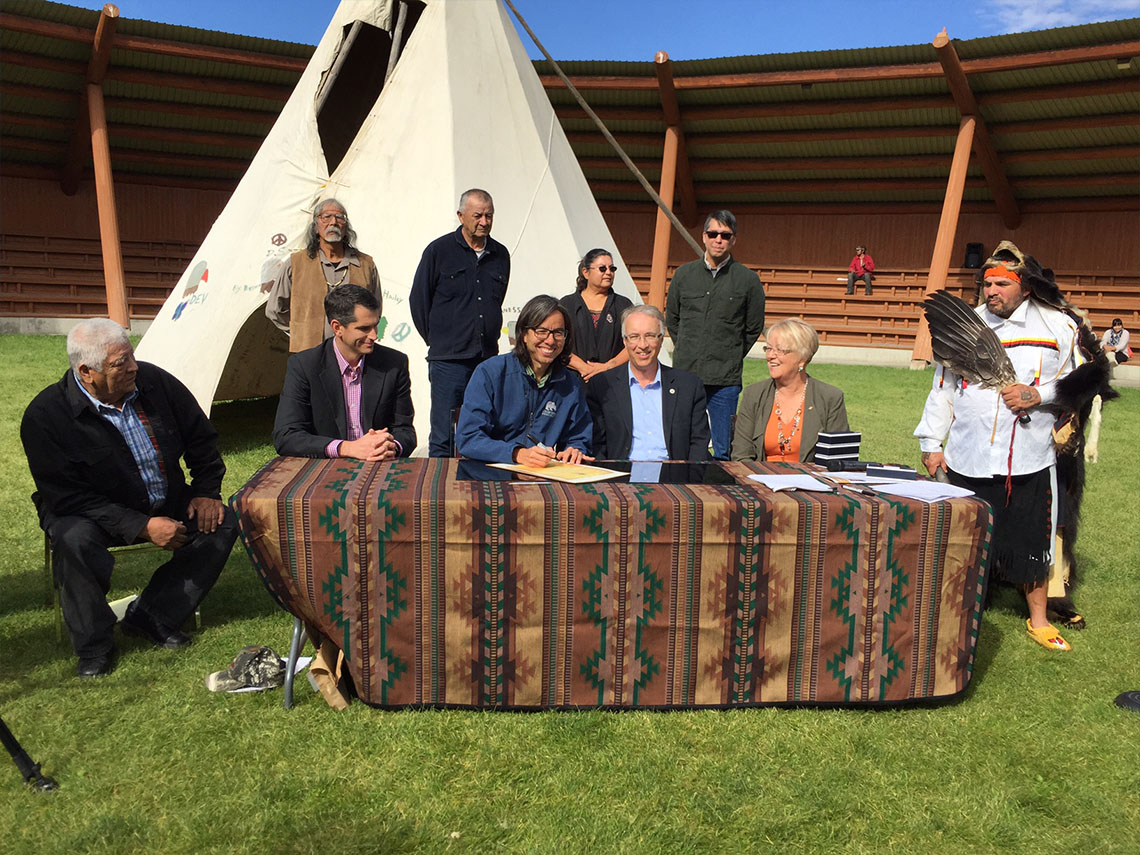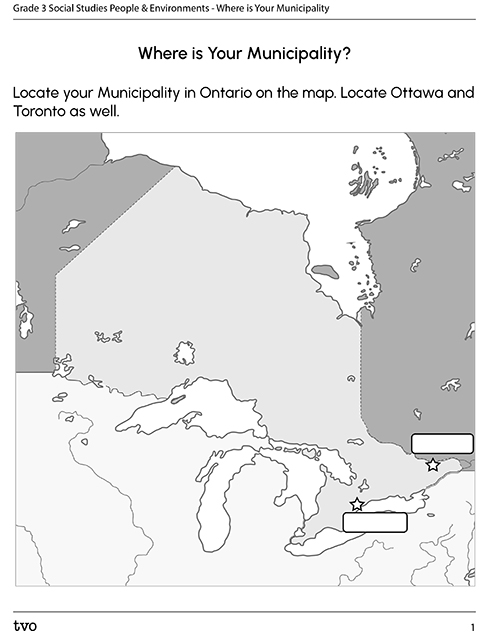Minds On
All about Ontario
Explore this video entitled “Ontario” to learn more about this province.
Using what you learned in the video, select the correct answer.
Based on what you learned in the video, decide whether each statement is true or false.
Select the correct answer, then press 'Check Answer' to see how you did.

The students in the video shared what they enjoyed about Ontario.
- What do you know about Ontario?
- Have you lived here long?
- Are you new to the province?
- What are your favourite things about Ontario?
Record your ideas in a notebook or another method of your choice.
Action
Provincial, municipal and First Nation community governments

Can you explain the term government?
Press ‘Definition’ to access the definition of the word government.
Did you know that Ontario has a government? In Ontario, the leader of our province is chosen when citizens vote, which usually happens every four years. The title for this provincial leader is Premier of Ontario.

A map of Ontario. The legend shows an empty circle that represents Municipalities, a star that represents the federal capital, a red circle that represents the provincial capital and a square that represents First Nation communities. Big Trout Lake is a First Nation community in the north-west. North of that is the First Nation community of Peawanuk,. East of that is the First Nation community of Attawapiskat. South of that is the municipality of Kapuskasing. The municipality of Timmins is just east of that. Below Big Trout Lake is the municipality of Kenora. South and east of Kenora is the municipality of Thunder Bay which is close to Lake Superior. The municipality of Sault Ste Marie is between Lake Superior and Lake Huron. On the south side of Lake Huron is the municipality of Sarnia. The provincial capital of Toronto is on the shore of Lake Ontario, east of Sarnia. Curve Lake First Nation community is north and east of Toronto. Ottawa, the federal capital is north of Curve Lake.
Ontario is further divided into different municipal or regional entities.
Press ‘Entities’ to find out what entities Ontario is divided into.
These municipal and regional areas also have members of government. The title of the municipal leader is Mayor and the people who work with a Mayor are called Counsellors.
On the map of Ontario, the names of each location are written in a specific way, as the image showed.
How can a map tell us whether a location is a province, capital city, First Nation community or municipality?
Select the correct answer.
First Nations people who live in First Nations communities have their own leaders in their communities. Some of these leaders are traditional and family leaders. Other leaders are leaders under the band council system. These leaders are elected every two or four years. The title for this leader is Chief. The Chief’s council is called a Band Council.

In these municipalities, First Nation communities or regional areas, these groups provide specific services and make choices about making changes depending on the needs of the people who live there.
Responsibilities of municipal, regional, and First Nation community leaders
Let’s learn what the responsibilities of municipal, regional, and First Nation community governments are.
We can start by exploring these two videos.
As you explore these videos, take note if any responsibilities of the leaders are mentioned.
The first video introduces us to Marissa from the reserve of Curve Lake. Access this video entitled "Marissa" to learn more about Curve Lake.
The second video introduces us to some responsibilities of municipal leaders.
So, what are some of the responsibilities of these leaders?
Let's compare and contrast their responsibilities.
| Chiefs and their band council are responsible for… | Mayors and their counsellors are responsible for… |
|---|---|
| Helping their community members in the areas of housing, health, education, roads, water, and family care | Helping their community members in the areas of city parks, public transportation, garbage & recycling, water, fires, and control of pets |
| Listening to the needs of their community members | Listening to the needs of their community members |
What is one question you might ask each of these leaders to find out more about their responsibilities in their communities?
Consolidation
Review your learning
For each sentence, select the missing word from the drop-down menu.
Research your own municipality, region, or First Nation community

Now that you’ve explored Ontario municipalities, regions, and First Nation communities, it’s time to research your own municipality, regional, or First Nation community entity!
How can you find the answers to these questions?
- You can ask trusted adults.
- You can do a safe search online for your municipality, region, or First Nation community with a partner, if possible.
- You can check a local newspaper if possible.
Choose three of these questions about your municipality, region, or First Nation community and those who lead it:
- Who is the leader and what is their title?
- Where could you find their office?
- How long have they been the Chief or Mayor?
- What is something they have helped your community with? How do you know?
- Have you ever encountered this leader in your life? Where were you?
Record your responses in a notebook or another method of your choice.
Where is your municipality, region, or First Nation community?
Use the following map or a digital interactive map to locate your municipality, region, or First Nation community in Ontario.
Locate Ottawa and Toronto as well.
- What other locations would you like to include on your map to help you familiarize yourself with the location of your municipality, region, or First Nation community?
- What other municipalities, regions, or First Nation communities are nearby?
Complete Where is your municipality, region, or First Nation community? in your notebook or using the following fillable and printable document.

Press the Activity button to access the Where is your municipality, region, or First Nation community?.
Activity(Opens in a new tab)Reflection
How do you feel about what you have learned in this activity? Which of the next four sentences best matches how you are feeling about your learning? Press the button that is beside this sentence.
I feel...
Now, record your ideas about your feelings using a voice recorder, speech-to-text, or writing tool.